Profile
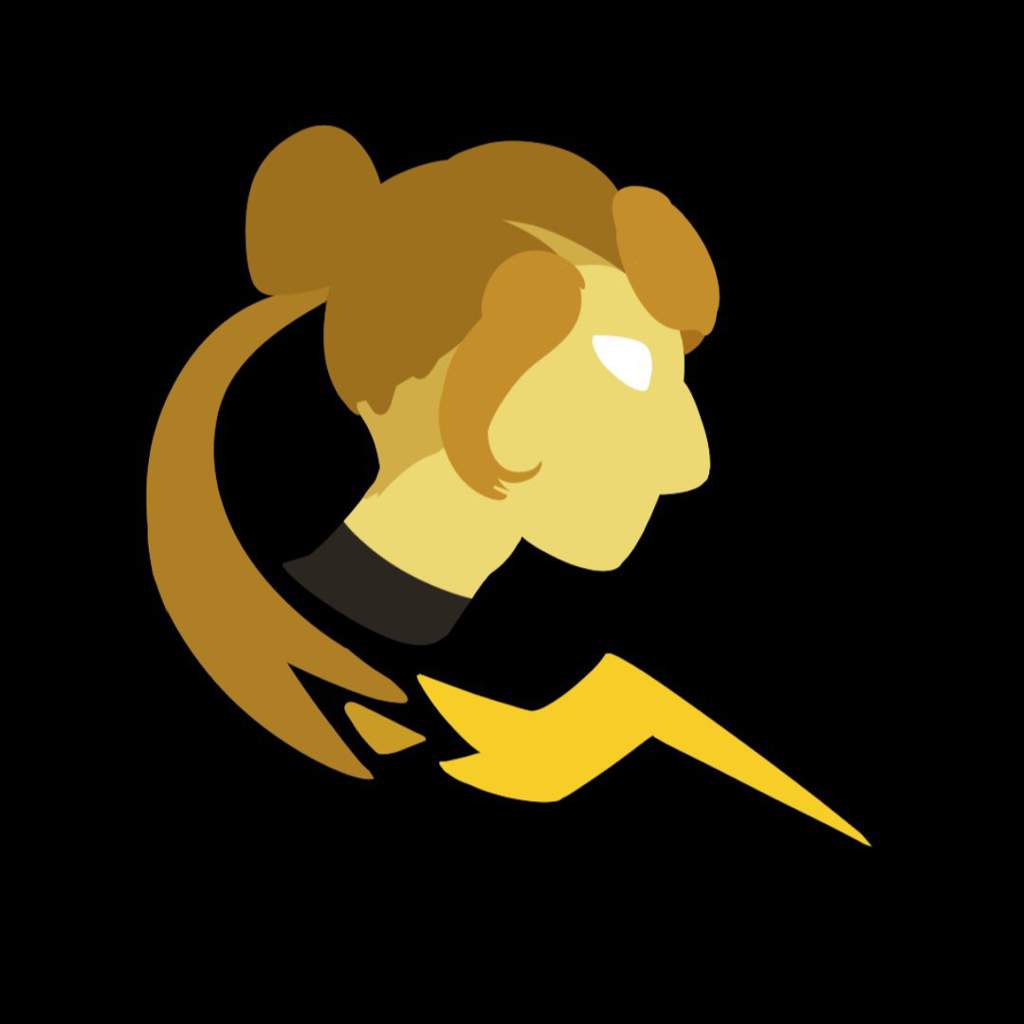
Ranking: low upper class (kinda like a topaz)
Heliodors are specialized space fighter pilots whose main job is to clear out dangerous asteroids, comets, space dwelling creatures or anything that requires high speed and accuracy. They can also work as engineers, regular pilots or flight acrobats.
They are part of a beryl family, which is well known for their great technical knowledge, piloting skills, leadership abilities, and usually high ranking. Other types of beryl are: Aquamarines, Emeralds, Morganites etc...
What makes them unique is that their variety is usualy created in pairs of two. Every pair shares the same identification symbol on their hip plate. Their gemstone placements and suits are mirror image the same. When fused, their uniforms create a symmetrical pattern.
This is a fanmade FREE TO USE species connected to a show called Steven Universe.
The wiki is written in correlation to the canon fact that gems are solar-powered space robots. If you personally see gems as something different, I don't mind... Just ignore the parts where I call them machines.
- Make Ocs
- Make adopts
- Make customs
- Play around with their lore/looks/abilities
- Link your ocs to this wiki
- Claim this species as your original idea
- Lie about its openness
- Create any heliodor sub-species without permission
The og amino wiki version was intentionally published on Valentine's Day
Having two different models of the same gem is a reference to a real life mineralogy, where golden beryls and heliodors are often mistaken to be the same (even though they are not)
The glowing powers of perfect cuts are based of the gemstone's name origin (from Greek: hēlios = sun, dōron = gift)
Each heliodor is created in pairs of two. They are practically soulmates with their co-pilot, having deep subconscious connection to one another. Thanks to that, they are capable of predicting actions and behavior of their other half, which helps them being perfectly synchronized while fighting and flying. If both pilots are perfect cuts, they can even telepathically communicate with each other.
Being together also keeps them in constant high morale which is usually hard to achieve with other, much more egocentric beryls. This means they can perform harder time consuming tasks, because they rarely complain or lose interest.
Of course, as a side effect, they've a high risk of developing romantic feelings and self-conscious fusions, but nobody on Homeworld talks about that...
A few pairs of heliodors are overall a great choice over an entire fleet of spaceships. They work harder, need less resources and are better at teamwork than anybody else.
When heliodor emerges, they're already subconsciously programmed to be ably to recognize their future piloting partner.
The real deep bond, however, starts to form after both pilots spend with each other at least two hours. It's important to note that their programmed connections and actual relationship to one another aren't the same thing, but rather two factors that usually go very hand in hand.
A tricky situation occurs when one of the partners never emerges. While the remaining heliodor might be less effective at work, they usually don't suffer from any emotional damage, which cannot be said about a heliodor who lost their co-pilot after connecting with them. Nevertheless, early era 1 still deemed these beryls as defective because there were plenty of resources to make brand new ones.
Heliodors have a great synergy with their partners, often being really caring, protective and even flirty.
If one of the heliodors die, however, the other is devastated. They become emotionally unstable, overwhelmed by grief and extreme sorrow. They are unable to connect to any other heliodor ever again. By old Homeworld standards (because we all know therapy sucks there), the best way to put them out of their misery is to harvest them and replace them with brand new pilots.
Of course, gem's personality can be influenced by many factors, like personal experiences, home, friends, gemstone placement, coding etc. But there are a few characteristics that are often shared amongst heliodors:
1. never staying too long or too far away from their partner 2. care for each other 3. be loud and energetic 4. hate boredom 5. act cocky while annoyedHeliodors are generally great technicians and mechanics, easily capable of repairing damaged ships. They have great agility skills, but lack any fighting knowledge outside their cockpits. When fused, they are capable of defending themselves.
In old times, when ship engines were still pretty basic and primitive, heliodors were given electric powers. Thanks to them, they not only served the role of a pilot, but also a spare battery. Nowadays they use their electric abilities differently.
Their gems are constantly overflowing with excess electricity, that can be used in any way. However, most gems aren't usually designed to be able to deal with such a surplus of energy, so with a good and sudden hit, heliodors are able to temporarily overcharge their gem enemies, stunning them in a process.
For a brief moment, they can turn their physical body into a pure ball of electricity, which lets them travel faster in any direction.
In extremely stressful situations, usually when someone's life is in danger, they will use all of their energy, including the overflowing one, and boost their speed, agility, and physical power. This ability is extremely unhealthy for a long time and often usage.
Because of their reflexes, it's hard to catch them off guard. They're needed for quick orientation in hectic space battles.
For accumulating even more usable energy, all heliodors always create a bit smaller fusions than their combine height should be.
Each pair consists of one "right" (gemstone is located on the right side of their body) and "left" (the opposite) model. Both of these models have different production requirements, which is why they are usually produced in different kindergartens.
From a technical standpoint, calling every heliodor "Heliodor" is incorrect, since both model varieties officially have different names. While the right version is truly called "heliodor", the left one is referred to as "golden beryl". However, this naming is rarely used in public, even between heliodors themselves.
- Height ±193cm / 6'4
- Asymetrical suits and patterns
- Shiftable or permanent high heels
- Same pair symbol as their partner
- Visors
- Some traits as regular
- Taller than regular
- Glowing eyes
- Glowing bits of hair
- Rarely have electric hair
- Significantly shorter
- Faded colors
- Atypical colors (e.g. purple)
- Don't match with their partner
- Missing limbs
- Additional limbs
- Atypically large
- Grow antennas, stingers, mandibles, more eyes and other wasp-themed features
- Glider suits or wings
- Lose asymetrical suit patterns
- Black eyes
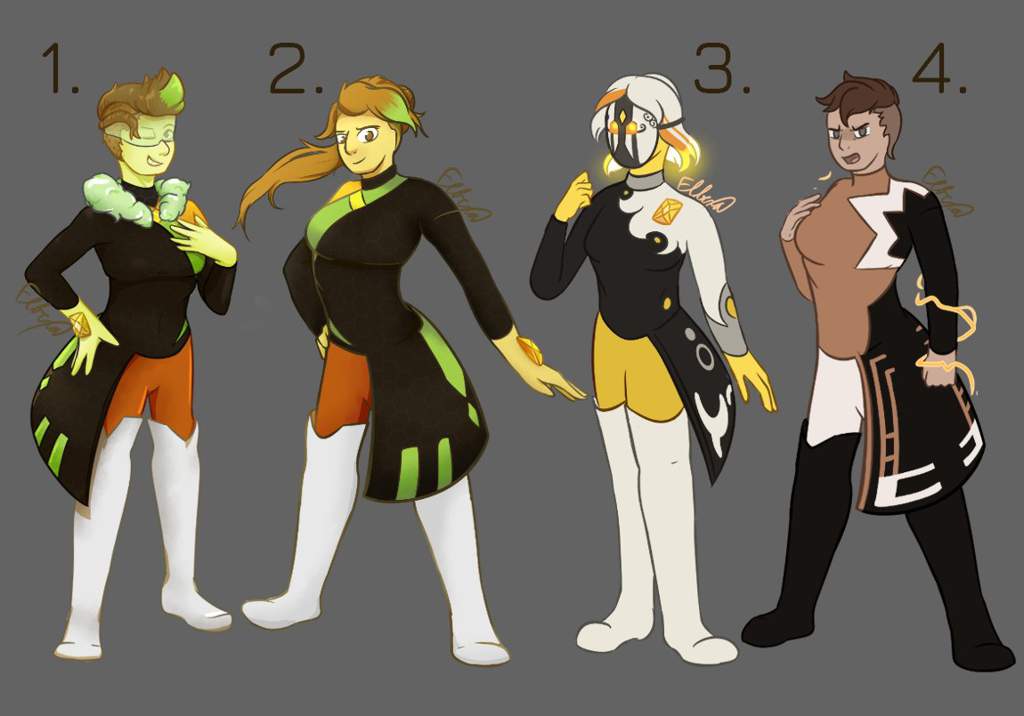
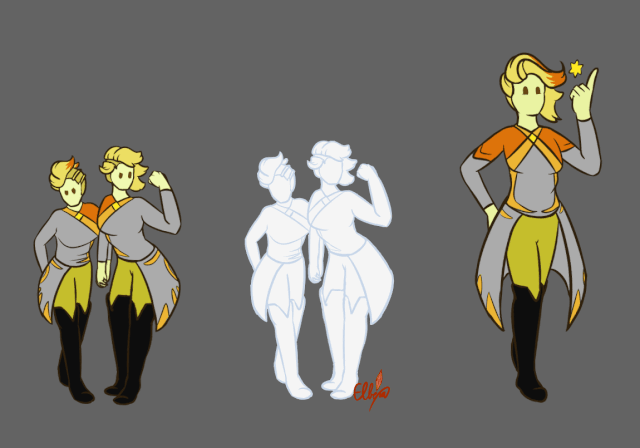
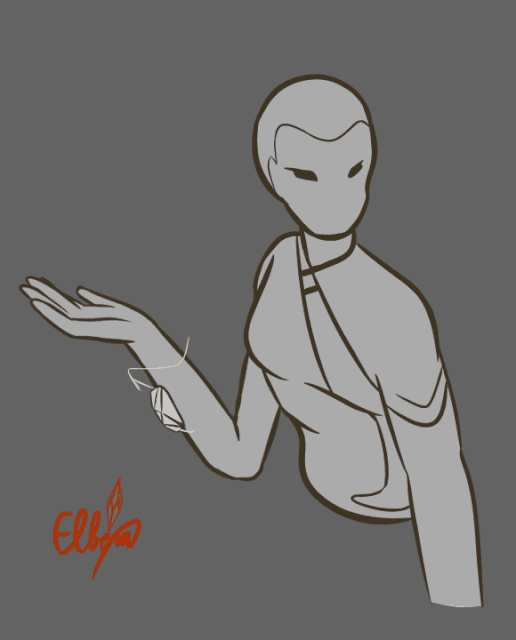

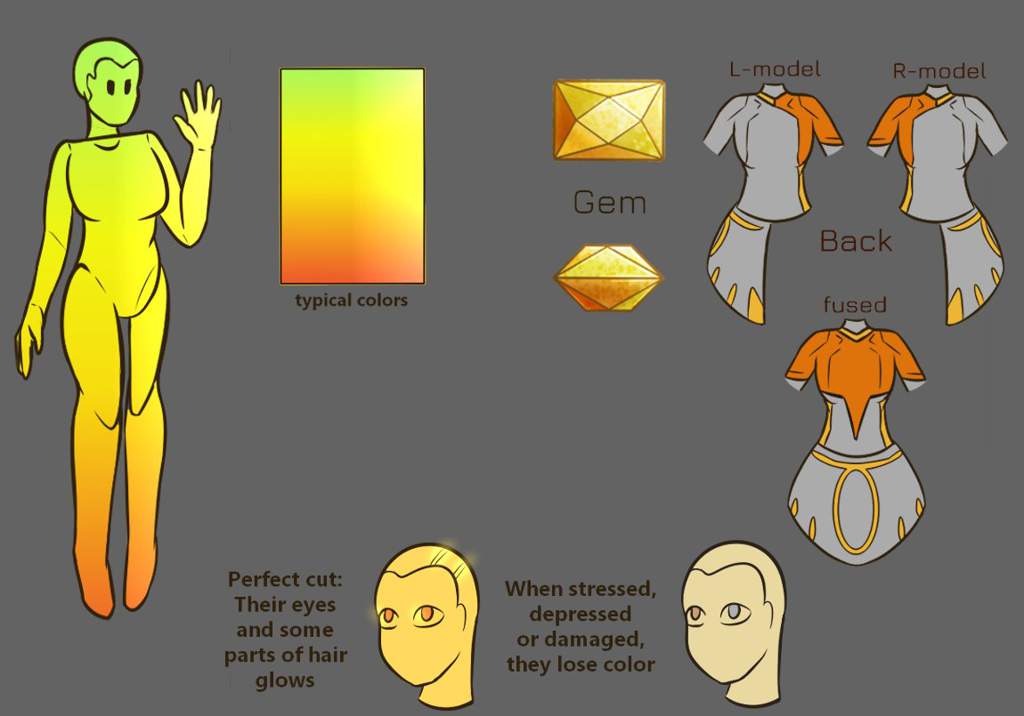
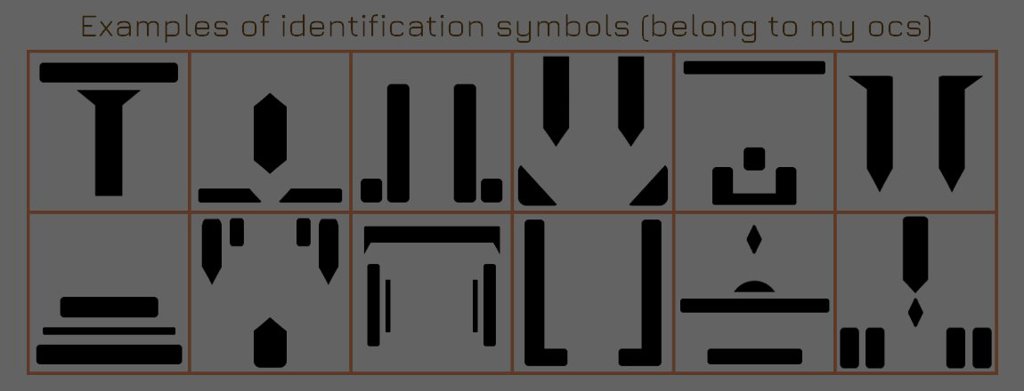


Comments